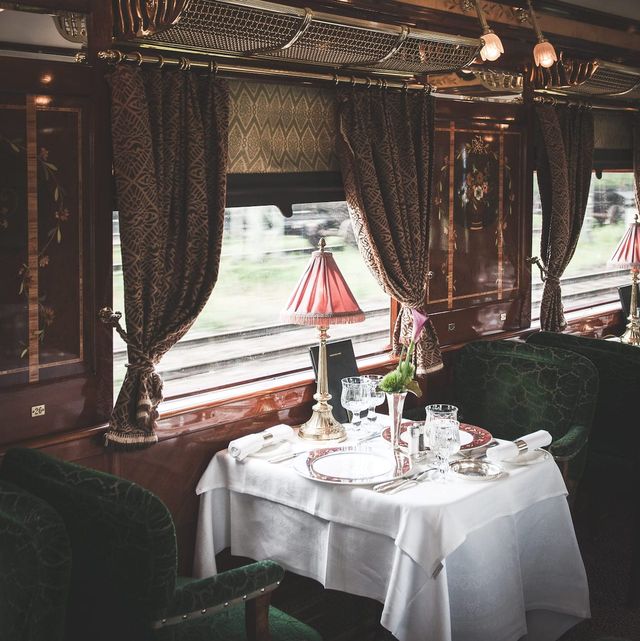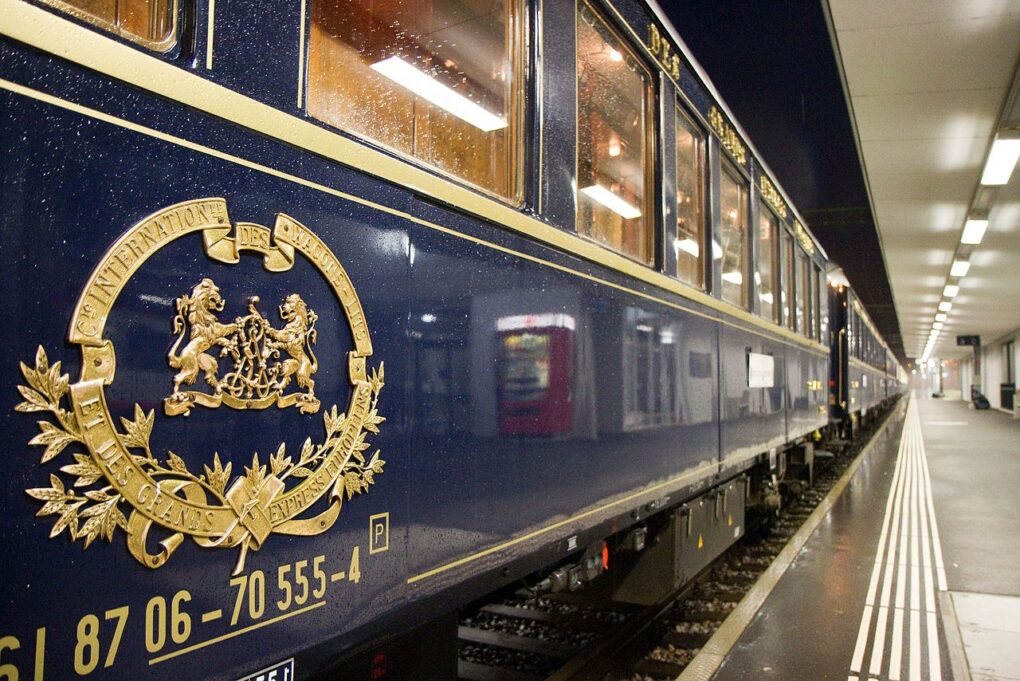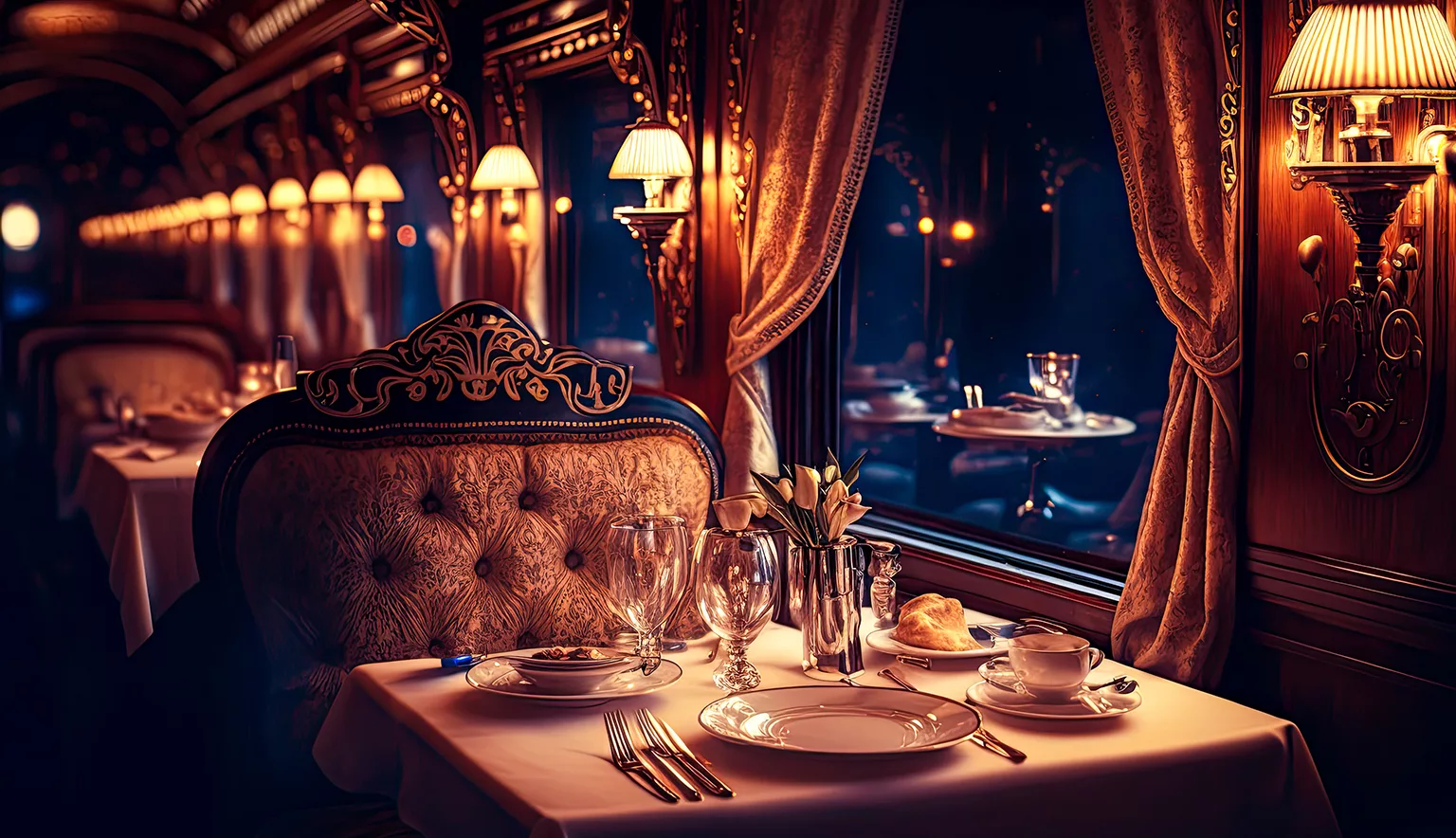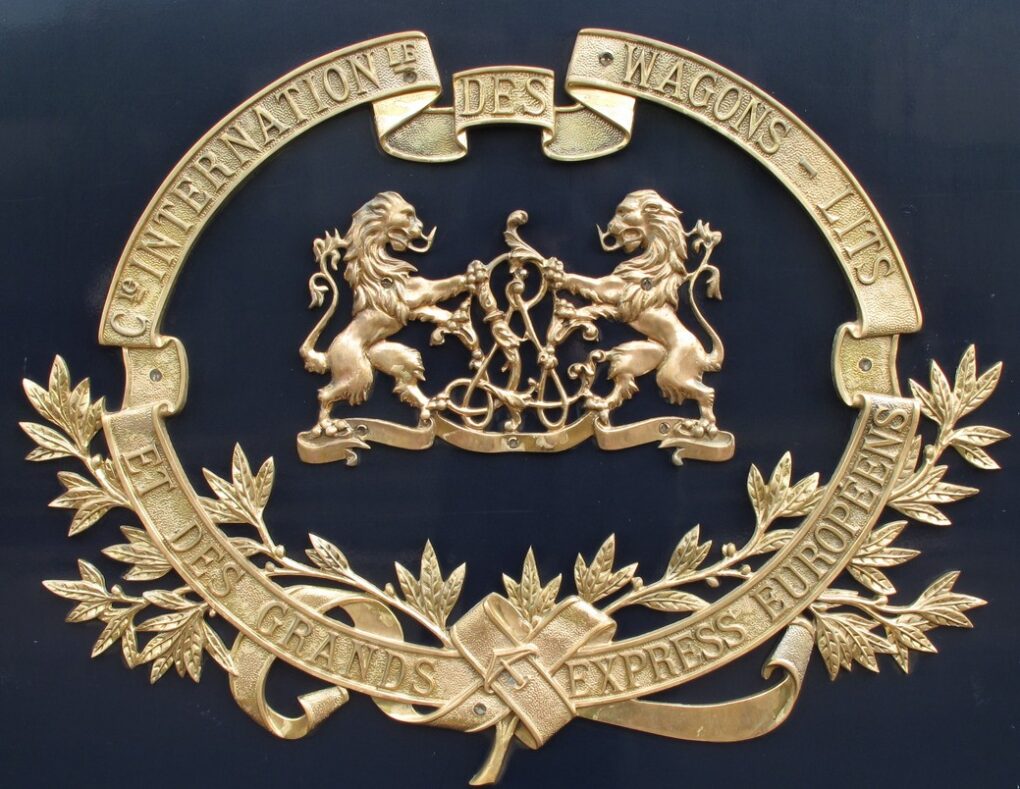
BRIEF ENCOUNTERS
MY NIGHT WITH A LEGENDARY LADY
I knew all about her, even before I met her. The Venice-Simplon Orient Express is synonymous with elegance, luxury, romance and mystery. Just reading her name conjures images of Puttin’ on the Ritz: suave men in double-breasted smoking jackets, and glamorous women draped in ropes of pearls, gliding across Europe in Art Deco luxury while sipping champagne cocktails.
She’s not just a train. She’s a legend, made famous by Agatha Christie’s Murder on the Orient Express, movies, TV shows, documentaries, and games and puzzles
She was and is a thrill to be experienced, not so much for where she takes you but for how she gets you there, in a style that was once the epitome of trans-continental luxury. Even now, sitting in the piano bar surrounded by guests in black tie listening to the rush of crushed ice sliding into a chilled martini glass, its easy to imagine Hercule Poirot somewhere nearby. All thanks to an American entrepreneur.

Kentucky businessman James Sherwood bought two cars, originally owned and operated by the Compagnie International des Wagons-Lits, at auction in 1977. Over the next few years, Sherwood spent
$10 million buying 35 more sleeping cars, restaurant, and Pullman carriages to complete an entire train. Restored to their full glory, the distinctive dark blue-and-gold cars are now owned by luxury travel operators Belmond of London who own many other historic, luxury properties around the world.

Today, our journey begins at a dedicated reception area on Platform 2 at London’s Victoria station where we gather for identification and processing of luggage, most of which we will not see again until Italy. We’ve been warned only a small carry-on bag each can travel with us. A tricky challenge when packing for a two-day overnight trip including recommended dinner dress.
The first leg of our journey is from London to Folkstone on another legend, the chocolate-and-cream British Pullman once known as The Brighton Belle, also ranked among the top 25 trains in the world. Settling down for our morning run south to the coast, we roll smoothly past the lush green pastures and hedgerows of Southern England while being served a light brunch paired with traditional Bellinis (peach juice and champagne cocktails) by smart, white-gloved attendants.
In days past, a crossing from Britain to “the Continent” would have been by ferryboat across often blustery open water. We transferred by luxury coach to Le Shuttle, a 35-minute glide through the Eurotunnel to Calais, France. And there was our first sight of the glamorous movie star herself looking spectacular decked out in her finest, sparkling in the afternoon sun. Uniformed attendants posed obligingly in front of her famous features while dozens of cameras, cell phones and iPads took advantage of this staged photo op. Somewhere nearby a brass band played.

We find our cabin, decorated with colored lacquered inlaid woods and polished brass fixtures. It beautifully evoked belle epoch elegance, but, equally true to the period, the cabin seemed a little cramped by modern standards. Here was a bench seat for two, not much more than a knee’s length from a small washbasin artfully hidden in a corner cupboard, a narrow luggage rack above, and a tiny drop-leaf table at the window. No sign of a bed. We learned the toilet was at the end of the corridor. But, should that trip become necessary during the night, fluffy black robes and chic black slippers embroidered in gold with the train’s logo had been thoughtfully provided.
But now it was time to change into dinner dress. Imagine two people dancing a tango in a phone booth on wheels, and you’ll get the idea. But no one complains. After all, we’re on the Orient Express about to enjoy the highlight of the trip: A Michelin-star, four-course dinner impeccably served in sumptuous surroundings. We enter the romantically lit dining car passing through a high-end souvenir boutique and a champagne bar where bottles chill in heavily carved Lalique ice buckets. In the dining car of honey-colored inlaid wood, deeply upholstered armchairs wait invitingly beside tables draped with starched linens and set with sparling crystal and brightly polished silver, monogramed flatware. Most guests are in formal dress.
In the crowded bar after dinner, a French piano player entertained into the small hours playing tunes from the 20s, 30s and 40s when no one was around but everyone knew from somewhere, sometime.
Back in our cabin, we discovered a small miracle. Our bench seat had been converted into two bunks, one above the other reached by an slender brass ladder with red velvet-covered rungs.
We slumbered peacefully through eastern France and northern Switzerland, waking east of Zurich to a breakfast landscape of tumbling waterfalls, soaring, snow-capped mountain peaks and panoramic lake views. By late morning, we were through the depths of the Gotthard Tunnel admiring the craggy, terra-cotta villages of northern Italy, and by afternoon tea were down from the hills and sweeping across the verdant landscape of the Veneto plains toward the Adriatic.
Just before 6:00pm we rumbled across the lagoon’s causeway into Venice-Santa Lucia station perched right at the water’s edge of the western end of the Grand Canal. The setting could not have been more appropriate. We’d arrived in a time capsule in a city where time has stood still.
